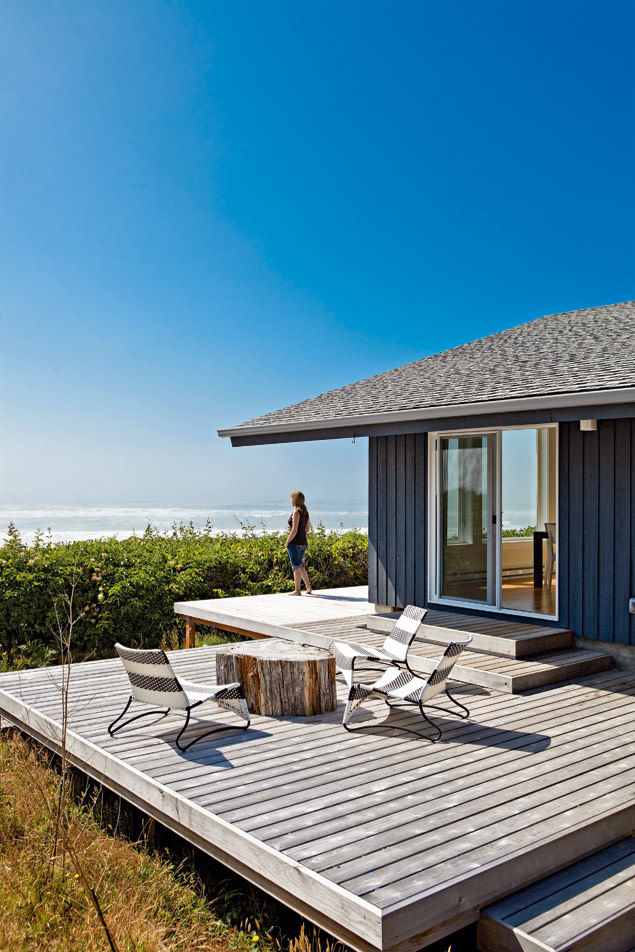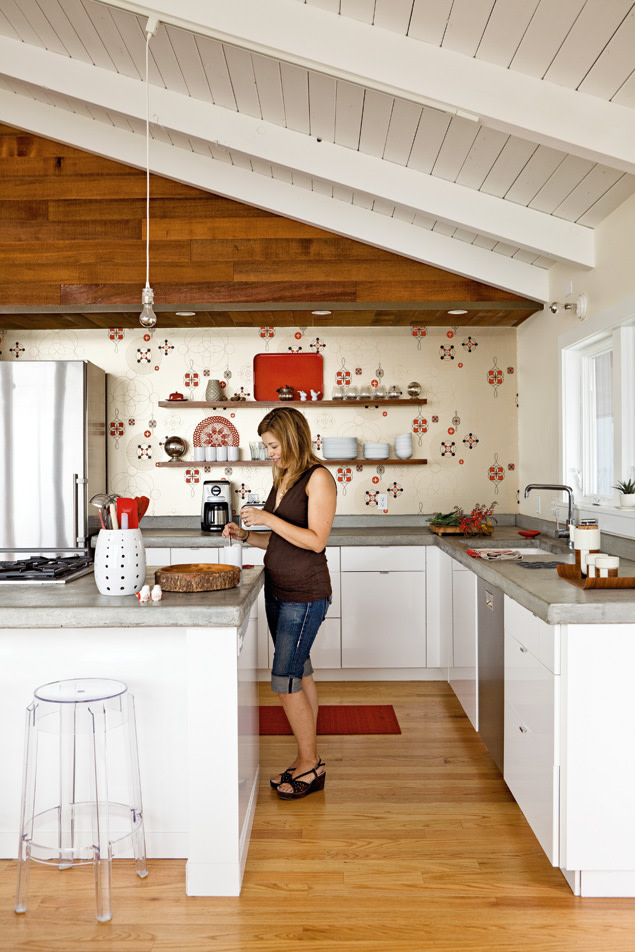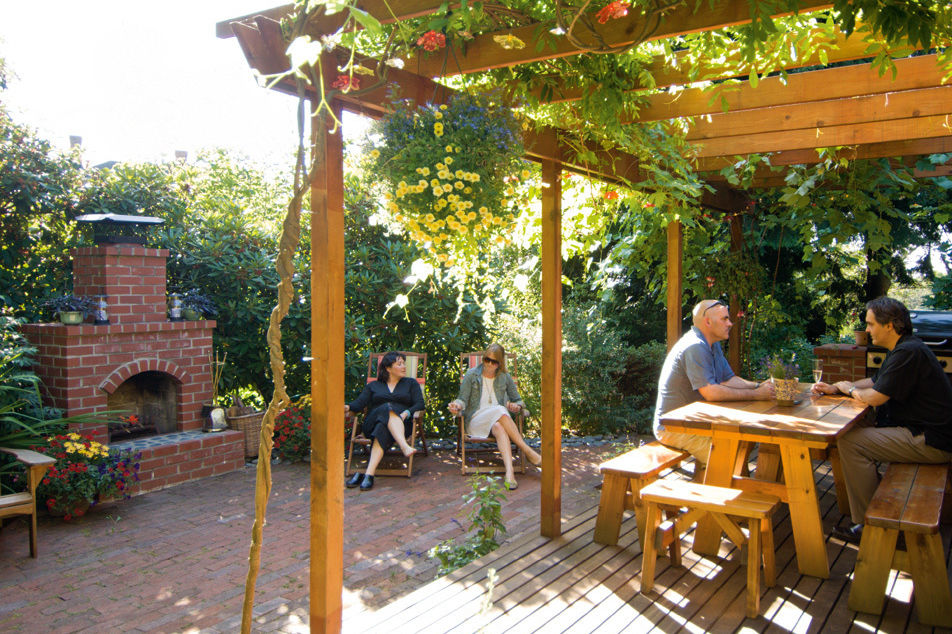Sand Castle

Image: Lincoln Barbour
Picture, if you will, the stereotypical beach vacation rental, with its kitschy seashell art, sand-worn carpet, 1960s blankets, cheap sheets, and cast-off furniture: a grandma-decorated family hand-me-down that the newest generation of owners is happy to rent out but doesn’t care about. Enter designers Pamela Hill and Lois MacKenzie, on a mission to change the status quo. Glass buoys, fishing nets, sand dollars? Not here. Scandinavian design, throw rugs, and concrete counters? Absolutely. Welcome to a new spin on the beach house.
“We kept seeing these houses that were dark, low, with furniture nobody wanted anymore,” MacKenzie says, sitting with Hill in the great room of their newest project—a 1972 Arch Cape two-bedroom ranch house just 25 feet from the Pacific Ocean. “We’ve all seen places like that—the kind where you’re afraid to sit on the couch. We didn’t understand why it had to be that way.”
This project, a complete remodel from the inside out, took a year and a half and $280,000 to complete. “There was nothing like this house on the coast,” MacKenzie says, pointing out the wall of floor-to-ceiling windows, the custom tile-and-concrete fireplace, and the spiral staircase. The designers’ vision was to create a boutique-hotel feel for the home—a high-thread-count lifestyle juxtaposed with the dramatic beauty of the outdoors. They installed new floors, a new kitchen and bathrooms, and new windows and drywall; rebuilt the entryway and deck; and finished the attic. Only the roof and one wood-shingled interior wall remain from the house’s former life.
MacKenzie and Hill met in the late 1990s while designing NikeTown stores. They developed a working relationship and a friendship that, 12 years later, has bloomed into three investment properties and an LLC called OttoBaat (ottobaat.com). (The name evokes the lucky number eight in both Chinese and Italian.) Both women are full-time designers with a deep and abiding love of craft, and their respective loves of the new and the old complement one another at OttoBaat.
{page break}

Mackenzie and Hill (pictured) used an elegant, graphic pattern from Walnut Wall-Paper (wallnutwallpaper.com) in the kitchen to round out their simple color palette of bold reds, whites, and browns.
Image: Lincoln Barbour
MacKenzie envisioned an open expanse of space in the house’s great room. For her, environments shape human relationships—and small, dark rooms don’t encourage the group activities that form the heart of family life. So she and Hill tore down the walls dividing the living, dining, and cooking areas and moved the entryway to the north side of the house. They then designed discrete and flexible spaces within the larger room, strategically arranging couches, pouring a luxuriously large concrete island in the kitchen, and creating a dining area with a large table.
’It’s our million-dollar view. They only make so much ocean. And there it is!’ —Pamela Hill
“We wanted it to be open and inviting,” MacKenzie explains. “What do we do all day? We cook, we eat, the kids play, we relax. Here, we can do all that together.”
If MacKenzie’s domain is the larger puzzle pieces of the design, Hill’s focus is on the details—like lighting, one of the make-or-break issues in this remodel. The pitched roof that lends the great room its majestic scope was constructed with rigid insulation, which meant that recessed lighting and hidden wires couldn’t be used. But Scandinavian modernism doesn’t mix well with snaking conduit. “I spent hours trying to figure out a way around it,” Hill says.
Their search for the right fixtures lasted for months, until Hill stumbled on two bronze chandeliers at the ReBuilding Center that had been salvaged from the old Benson Hotel. She paid $200 for both and crossed her fingers that they would fit in MacKenzie’s truck. (They did.) After sanding the rust off the bronze, she spent two days on a ladder wielding cans of white spray paint. The result: conversation-piece lighting, with traditionally elegant curves that offset the sharper lines of the pitched ceiling, and that, happily enough, resonate with the sweep of the spiral staircase that leads to the attic nook.
The original plan was to sell the house to finance their next project, but they’ve since reconsidered, instead co-owning the house and renting it when they aren’t using it. “This is a once-in-a-lifetime house,” says Hill. “It made us grow up as designers, businesswomen, and investors. It’s a project we fell in love with.”




